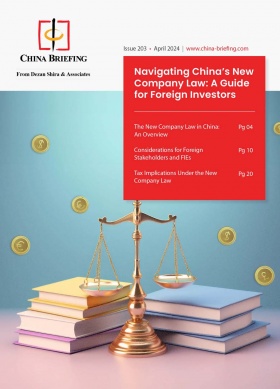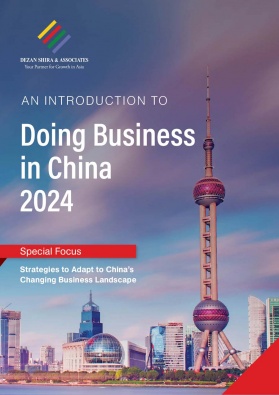Navigating Women’s Employment in China: Recent Advancements and Ongoing Challenges
China’s strides toward gender equality in the workplace have been notable, marked by a growing number of women joining the workforce. Yet, substantial obstacles persist, hindering the full realization of true gender equality in the Chinese work environment. These barriers span from gender-based discrimination to deeply ingrained societal expectations surrounding women’s roles, collectively posing challenges for women striving to shatter the glass ceiling.
In today’s dynamic global business landscape, there is a growing emphasis on women’s employment and empowerment. Countries worldwide are intensifying their efforts to combat gender-based discrimination. China, too, has made significant strides in promoting gender equality and fostering a more inclusive society for women.
These efforts have materialized through a diverse range of policies and initiatives. From organizing job fairs for women to enacting regulations aimed at safeguarding the interests of female employees, China has consistently achieved higher female employment rates compared to the global average.
However, despite this progress, achieving gender parity in leadership roles remains an ongoing challenge. The representation of women in top positions within companies continues to lag behind, and underlying gender-related issues persist.
Growing gender diversity in senior positions
The landscape of female representation within companies in China has seen noteworthy development in recent years.
According to recent US-based financial indices and analysis tools provider MSCI, the representation of women among senior level positions has seen a notable rise in Hong Kong-listed companies. In these firms, women accounted for 19 percent of the board seats as of October 2023, a significant increase from the previous year and noteworthy when compared to other Asia-Pacific countries.
This positive performance can be attributed to Hong Kong’s regulatory policies – in particular, the Hong Kong Exchanges and Clearing’s (HKEX) listing rule that requires companies with single-gender boards to introduce at least one female board member by the end of 2024.
According to the MSCI report, this trend seems to contrast with what has been registered among companies in the mainland, revealing a slower pace of gender diversity promotion among the latter’s corporate boards. In 2023, mainland China companies achieved a representation of 15.7 percent, trailing both the average worldwide and Asia-Pacific region representation levels. All-male boards still prevail in several large-cap companies in the consumer, information, and energy sectors, reflecting a lower rate of women specializing in these sectors.
Despite these contrasting trends, it is worth noting that as of 2024, more than half of Hong Kong-listed companies are mainland firms. This suggests that the latter have effectively adjusted to Hong Kong’s regulatory environment, indicating a favorable inclination towards promoting women to decision-making positions that could spill into the broader context of the mainland. In fact, while women may not hold a high percentage of C-suite positions, the proportion of companies with women chief financial officers (CFOs) still outperformed both the global and the Asia-Pacific average, underscoring progress in gender diversity in senior leadership roles.
Initiatives such as the National Program for Women’s Development (2021-2030), have played a crucial role in fostering this growth. While progress may be gradual, the top-down approach adopted by such initiatives have played an important role.
Analyzing the data shows that achieving gender parity in executive roles has been slower due to overall difficulties in climbing the social ladder within the corporates. However, recent developments within China’s overall job market reveal more promising numbers for women entering the workforce at its early stages.
Notably, there has been significant growth in the overall workforce participation and mid-level promotion rates in recent times.
Workforce participation and mid-level promotions
The latest iteration of the National Program for Women’s Development (2021-2030) guidelines aims to maintain the proportion of working women in the total workforce at around 45 percent and seeks to ensure that the proportion of women employed in urban units can reach around 40 percent by 2030.
Already, figures from the National Bureau of Statistics had revealed that in 2022, 43.2 percent of the working population consisted of women. Additionally, around 40.5 percent of female workers were employed by non-private enterprises in urban areas (e.g., state owned enterprises, foreign invested enterprises, etc.).
This positive momentum continued in 2023, as evidenced by the 2023 Global Gender Gap Report, which highlighted China’s progress in economic participation and opportunities. With a 72.7 percent closure of the gender gap and an 81.5 percent parity in the labor-force participation rate, China’s performance surpassed the global average. This could imply that challenges lie in advancing to roles of responsibility rather than in entering the workforce.
Government initiatives to boost female labor force participation
The Chinese government, in collaboration with relevant authorities, has played a key role in promoting targeted policies and initiatives aimed at creating positive stimulus that would encourage women’s participation in the labor market.
Organization of job fairs for female job seekers
Large-scale job fairs specifically tailored for female job seekers, such as the recently organized “Spring Breeze Sending Warm Employment and Warming People’s Hearts” (春风送温情 就业暖人心) job fair, serve as platforms for women to explore employment opportunities, receive career guidance, and engage in consultation. These job fairs provide a combination of both online and offline platforms ensuring a bigger range of participation. Furthermore, consultation areas contribute to enhancing women’s support system in their career planning and skill development.
Skills training systems for laid-off women
In addition to job fairs, the government has intensified its efforts to provide job opportunities for women workers that have been laid off. This includes the implementation of targeted vacancies and the organization of skills training sessions aimed at enhancing their abilities and competitiveness in the labor market.
Women’s Rights and Interests Protection Law
Finally, as part of the broader effort to promote gender equality in the workplace, the Chinese government has taken steps to strengthen the women’s rights protection legal framework through a series of policies and legislations that encompass women’s discrimination prevention in the workplace and extended benefits for maternity leave.
The recent update of the Women’s Rights and Interests Protection Law, implemented on January 1, 2023, holds particular significance. The law is designed to safeguard the rights and interests of women, aiming to prevent discriminatory practices during the recruitment process and in opportunities for career advancement. Specifically, the law prohibits penalizing women based on factors such as marital status, pregnancy, or parental status, addressing longstanding grievances voiced by women who have faced discrimination in these areas.
The effective implementation of this legislation will create a more supportive environment for women to participate in the job market, enabling them to pursue careers beyond the entry-level position. This could potentially facilitate women’s advancement to executive roles aligning with their career aspirations.
Persistent gender-related issues
Despite the recent strides made by China, deeply entrenched traditional gender norms and unconscious biases within the workplace continue to pose persistent challenges for women. These obstacles restricts women’s employment opportunities and career advancement.
According to a survey conducted by the recruitment portal Zhaopin, of particular concern for Chinese women are the persistent gender discrimination and concerns over work-life balance.
On one hand, women face lower average salaries compared to men, perpetuating a persistent wage gap. According to the survey, women’s average monthly salary in 2023 amounted to RMB 8,958 (approximately US$1244), a 12.9 percent lower compared to their male counterparts, largely due to the underestimation of women’s abilities.
On the other hand, societal expectations regarding women’s roles as caregivers further compound these challenges. Women are often expected to prioritize familial responsibilities over career advancement, leading to an unequal distribution of family duties within households. This imbalance frequently results in women enduring the most of unpaid domestic work, making it difficult to balance professional and familial obligations.
This societal pressure in some cases negatively impacts women’s possibilities in career progression. In this context, many female workers have passively lost promotions as they chose to be in the “marriage and childbearing stage,” influenced by deeply ingrained societal norms regarding women’s roles.
This persistent focus on women and their maternal roles is also portrayed in government policies issued to ease the balancing act between work and motherhood, such as extended maternity leave, which, while well-intentioned, may inadvertently exacerbate challenges for women in the workforce. These policies often fail to adequately compensate for corporate losses, leading some employers to view men as more cost-effective options.
Looking ahead
China has made strides in promoting gender equality in the workplace, despite global gender discrimination persisting. The country has implemented regulations to provide women with equal access to employment opportunities and initiatives, aiming to narrow the gender gap and enhance career advancement prospects. Employers are urged to support government initiatives by fostering gender equality awareness and creating supportive work environments. With ongoing efforts, female employees in China can attain greater empowerment and contribute significantly to societal advancement.
About Us
China Briefing is written and produced by Dezan Shira & Associates. The practice assists foreign investors into China and has done so since 1992 through offices in Beijing, Tianjin, Dalian, Qingdao, Shanghai, Hangzhou, Ningbo, Suzhou, Guangzhou, Dongguan, Zhongshan, Shenzhen, and Hong Kong. Please contact the firm for assistance in China at china@dezshira.com.
Dezan Shira & Associates also has offices in Vietnam, Indonesia, Singapore, Australia, United States, Germany, Italy, India, and Dubai (UAE). We also have partner firms assisting foreign investors in The Philippines, Malaysia, Thailand, Bangladesh.
- Previous Article China’s Machine Tool Industry: Market Trends and Opportunities
- Next Article Shanghai Seeks to Simplify Business Deregistration Procedures







